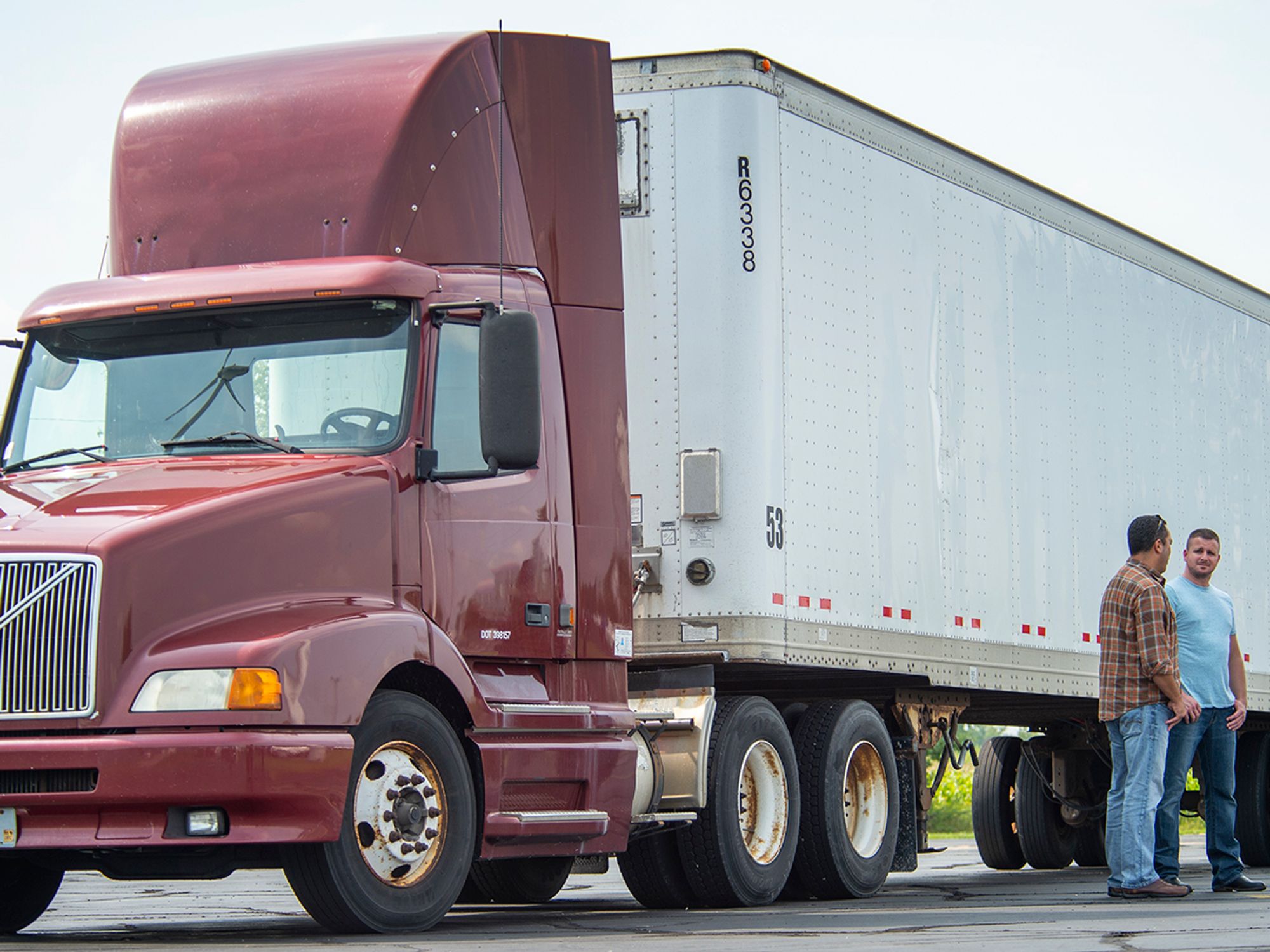Driver types

- In the world of Transportation Management, it is not uncommon to utilize various outlets for expanding a company’s driver fleet.
- The decision to expand should always be based on sound business planning within the Action Plan to determine the best course of action.
- There are several different driver types to utilize to expand a company’s driver fleet including owner-operators, drivers from employment and driver-leasing services, and occasional, seasonal, and intermittent drivers.
In addition to company drivers, a company’s driver pool may expand to include owner-operators, drivers from employment agencies or leasing services, and/or occasional, seasonal, and intermittent drivers.
Owner-operators
Owner-operators are a commonly used addition to a company’s driver fleet, second only to the actual company employed drivers. Owner-operators can be a valuable resource if used correctly and applied to the current business model in a productive way.
A fundamental decision faced by carriers in their driver hiring policies is what the mix should be between owner-operators and company drivers. This decision is based on the motor carrier’s philosophy about managing the workforce and the financial concerns relative to each group. There are significant advantages and disadvantages associated with hiring all owner-operators, all company drivers, or a mix of both.
One advantage to having all owner-operators is that they create a level of flexibility for managers, not realized with having all employee-drivers. This is mainly seen as demand for freight fluctuates throughout the year. Owner-operators are only paid for the work that they do, with no continuing commitment to salaries or benefits, therefore minimizing on-going operational costs.
However, this flexibility does come at a price. Owner-operators make their own schedules so availability at the manager’s request is sometimes not feasible. Furthermore, the perception that owner-operators enjoy a certain level of independence, and that they can and do move freely between carriers, causes a certain level of uncertainty as to the on-going driver force. For this reason, some companies chose to not hire any owner-operators.
Carriers’ attempts to control the work of independent contractors may risk misclassification issues. Misclassification can occur when the control meets criteria that could get contractors classified as employees under the Department of Labor or the Internal Revenue Service (IRS). Various states such as California, have strict laws restricting the use of contractors. Among other criteria, California Assembly Bill 5 prohibits carriers from leasing on contractors who haul freight since that is the carrier’s core business.
Managers in these companies prefer to have greater control over the day-to-day actions of employee-drivers and can better address financial and business concerns with more consistent fleet numbers and productivity projections. However, this too comes at a price. The employee-driver will have benefits and insurance, as well as other on-going expenses that the company must commit to. An increase or decrease in capacity, based on economic variances, may not allow for the consistent revenue necessary to cover these expenses.
The decision to use owner-operators should be made by management based on sound financial evaluation of the company’s operations, goals, and projections for volume and productivity.
Employment and driver-leasing services
An easy solution to putting otherwise empty trucks on the road may be to use a driver-leasing or employment service. This may seem like a simple solution but again, there are certain business concerns that must be addressed.
A driver from one of these agencies may be “qualified” to drive, but they may not necessarily be trained to your company’s standards. A thorough evaluation as to the level of knowledge and experience of each driver, needs to be determined before putting them in a company vehicle. Furthermore, based on the type of freight a company hauls, additional training in freight handling may also be necessary.
An important thing to remember in using driver-leasing and employment services is that regardless of whether the driver receives his/her paycheck from the agency or directly from the company, the Department of Transportation (DOT) still considers them to be under the company’s control and responsibility pertaining to all operating, administrative, and regulatory guidelines. This means that the company must be sure that this is a favorable business decision, as the impact of these types of drivers on the financial and legal “bottom line” is very similar to that of an actual employee-driver.
Occasional, seasonal, and intermittent drivers
The occasional, seasonal, or intermittent driver is on the company’s payroll to drive during those times when extra help is needed. Examples could include drivers who fill in during busy seasons, vacations, or other absences. These drivers would be considered employees during the time that they worked.
These “temporary” drivers may also be licensed and trained to drive, but also works in another capacity at the same company. During times of increased freight volume and driver need, this person could fill in at a moment’s notice. These people may be managers, dispatchers, mechanics, warehouse workers, or anyone else on staff that’s authorized to drive.
Even though these people would not be permanent or full-time drivers, they would still need to be fully qualified under DOT regulations, including all pre-employment screening and qualifying, each time they drove. In addition, these “sometime” driver-employees would need to stay in the random drug testing pool for the company’s drivers and would be subject to all pertinent rules and regulations relative to the driver population.
This approach to the driver fleet can be a fairly profitable one, however, a company considering this approach must look at the associated costs of recurring qualification, training, and added maintenance/equipment issues, and how it relates to the revenue generated by the “sometime” driver.
